Development Division
Large Power Production Management Division
Power Solution Business
YANMAR Technical Review
New 4JH Marine Engine: An Electronically Controlled Diesel Engine that Sets A New Standard for the Sail Boat Market
Abstract
The new 4JH series of marine diesel engines from Yanmar were released in 2014. Developed based on 30 years of experiences with the previous JH series of marine engines, the new engines are based on Yanmar's new TNV series of industrial diesel engines and incorporate proprietary control logic for marine propulsion engines. The adoption of optimized combustion technologies and a common rail fuel injection system have enabled the engines to comply with stringent exhaust emission regulations while also satisfying customer requirements for good fuel economy, clean exhaust, and low noise and vibration. The electronic control system allows easy engine installation, communication with onboard navigation equipment, and connection to a joystick maneuvering system. Yanmar believes the new engines will delight customers and set a new standard in the pleasure boat market. This article describes the new technologies used in the 4JH series engines.
1.Introduction
Yanmar's small diesel engines are well known for their use as propulsion in sail boats and other pleasure boats as well as in agricultural and construction machinery. Diesel engines are widely used to power pleasure boats and similar boats worldwide, combining good fuel economy with excellent durability and reliability. It is likely that some readers are unfamiliar with sail boats and other pleasure boats. Fig. 1 shows photographs of a sail boat equipped with Yanmar diesel engines. Sail boats are used for sailing, which means they are equipped with sails to catch the wind and propel the boat. While this may give the impression that an engine or other power source is unnecessary, in practice diesel engines are used as an auxiliary form of propulsion for in-harbor maneuvering and to provide electric power for the onboard living facilities. Yanmar has the leading share of the international market for sail boat diesel engines, with the JH engine referred to in this article having long been the market leader and one of the company's flagship engines.

The performance requirements for diesel engines in the pleasure boat market (including sail boats) are growing year by year. In addition to things like high output and quiet operating, recent years have also seen rising interest in environmental performance factors such as fuel economy and exhaust emissions. Whereas it was common in the pleasure boat market in the past for users to perform their own engine maintenance by themselves, the number of "light users" seeking comfort and convenience has been on the rise over recent years. As these market requirements have changed with the times, Yanmar has received a wide variety of feedback from both users and boat builders who construct boats fitted with Yanmar engines. While Yanmar has utilized this information to make ongoing engine improvements, there were some aspects in which it had been unable to fully satisfy what the market was asking for. Accordingly, Yanmar in 2014 released the new 4JH engine, so called 4JH-CR (CR : Common Rail), that marks a major step forward by incorporating new electronic control technology into the conventional JH engine in order not only to satisfy market requirements but also to deliver a pleasant surprise to users. This article describes the new technologies adopted for the new 4JH-CR and the associated benefits for users.
2.Product Overview (Yanmar JH Marine Engine)
Yanmar's JH diesel engine for small boats first went on sale about 30 years ago in 1985. Over that time it has been subject to an ongoing series of enhancements. In 2014 a new generation engine was born which is environmentally friendly engine with full electronic control including a common rail fuel injection system like those already used in automotive and industrial engines as a key technology. Because marine engines are always used adjacent to salt water, special technologies different from those used on automotive and industrial engines are required. The new 4JH-CR features high quality and reliability, incorporating the extensive experiences and special technologies built up in partnership with users over approximately 30 years with the previous JH engine.
One of the features of the JH engine is that it was based on Yanmar's TNV industrial diesel engine. Similarly, the base engine for the 2014 4JH-CR is the latest TNV engine described in the Fall 2015 edition of YANMAR Technical Review. Accordingly, along with the extensive experience acquired from the past JH engine, the new 4JH-CR also incorporates numerous special technologies from Yanmar's industrial and other small diesel engines. The new 4JH-CR also inherits all of the marine electronic control technologies built up by Yanmar over many years (see Fig. 2).
As of the spring of 2016, the four models in the new 4JH-CR product range are the naturally aspirated 4JH45 (33.1kW) and 4JH57 (41.9kW) and the turbocharged 4JH80 (58.8kW) and 4JH110 (80.9kW). As described in section 3.6 below, all models comply with international exhaust emission regulations such as the Tier 3 regulations of the US Environmental Protection Agency (EPA). The new models also maintain the same engine dimensions as their predecessors, ensuring that the new 4JH-CRs are suitable for users who want to install them as replacements.

3.Applied Technologies and New Associated Benefits
3.1.Optimization of Diesel Combustion and Reduction of Black Smoke and Unburned Fuel in Exhaust
A long-time complaint of sail boat users is the hull stain that results from the black smoke emitted by the engine (see Fig. 3 left). Reasons include the fact that many sail boats have a white hull, making this black stain particularly noticeable, and that the stain caused by black smoke included in exhaust gas is difficult to remove. Boats with JH engines were no exception to this problem. Generally, the amount of black smoke in exhaust gas can be significantly reduced compared to mechanical fuel injection systems by using a common rail system. A common rail system can realizes an ideal combustion by controlling the fuel injection precisely using the electronic devices for the direct-injection (DI) combustion that fuel is injected directly into the cylinder. This enables combustion to achieve better environmental performance.
Indirect injection (IDI, In Direct Injection with a sub combustion chamber) continues to predominate in the market for small pleasure boats targeted by the JH engine. As IDI combustion tends to have inferior fuel consumption, this means there was unmet market demand for improved fuel economy. In response, the JH engine has for many years used DI combustion to provide users with better fuel economy (past JH engines have used DI combustion with mechanical fuel injection system). As a result, the JH engine was able to secure its position in the market for small pleasure boats as the only engine offering the superior fuel consumption made possible by DI combustion.
Given this background, there was no option but to adopt a common rail system that could resolve the concerns of users while still making the most of the DI combustion technology built up over time on the previous JH engines. As the TNV engine used as a base for the new 4JH-CR also features a common rail system, the new engine incorporates numerous combustion technologies from industrial engines, such as optimization of the timing and number of fuel injections. The resulting 4JH engine combines combustion technologies from throughout Yanmar and features significantly improved diesel combustion, with an 80% reduction in the density of black smoke in the exhaust gas when the boat is operated under normal conditions (see Fig. 3 right). In other words, by using a common rail system and electronic control to significantly reduce black smoke, the new 4JH-CR provides a solution to user concerns about hull stain while maintaining the excellent fuel economy of the JH engine.

The enhancements to diesel combustion have also helped improve the characteristic smell of exhaust gas from the diesel engine. This is the irritating odor that is apparent when a diesel engine is operated at low load and it is caused by the presence of unburned fuel in the exhaust gas. In sail boats, this occurs when using the engine for additional speed when sailing in light wind or to run the generator to provide electric power for onboard facilities when at anchor. At such times, the direction of the wind may be such as to blow the exhaust gas into the cabin, with the smell of the exhaust gas often making those onboard feel unwell. The timing and number of fuel injections has a major impact on diesel combustion. The new 4JH-CR achieves improved combustion when running under low load by optimizing these based on the piston parameters and other factors. This has succeeded in significantly reducing the amount of unburned fuel in the exhaust gas, thereby minimizing the odor that causes users to feel unwell.
3.2.Reduced Vibration and Noise
Engine vibration and noise are major factors in user comfort on sail boats and other pleasure boats. In the case of sail boats, the engine room is separated from living or sleeping quarters by a single bulkhead. This means that reductions in engine vibration and noise impact directly on the enjoyment of the boats. It was noted in section 3.1 that IDI combustion predominates in the sail boat market. One reason for this is that the low vibration and noise of IDI combustion are seen as an advantage compared to DI combustion. Accordingly, countermeasure was taken to achieve low vibration and noise on the new 4JH-CR (which uses DI combustion) by optimizing the timing and number of fuel injections to achieve "mild" combustion and by adopting measures for reducing vibration and noise from individual engine components. The accumulation of technologies built up by Yanmar over many years in industrial engines and elsewhere played a major part in implementing the techniques used on the new 4JH-CR. Thanks to these technologies, the new 4JH-CR features improved engine vibration and noise, providing users with a step up in boating comfort. Fig.4 shows laboratory test results of vibration and noise improvements.

3.3.Easy Engine Installation
A characteristic of the marine market, including pleasure boats, is that boats have a life in decades, with replacement of the engine and other parts. In the case of replacement, it is important for the new 4JH-CR to be easily installed as a replacement for the older JH engine or engines from other suppliers that are mechanically controlled. Typical examples include avoiding any need to change the size of the engine room when making the replacement and being able to continue using existing mechanical control systems such as the control levers for operating the engine, transmission, and other equipment.
Accordingly, the dimensions of the new 4JH-CR were designed to be close to those of the previous JH engine. In particular, a lot of effort was put in to the layout designing for engine control unit (ECU) and other control systems added on the new 4JH-CR while keeping the dimensions roughly the same as the older engine.
Users have a choice for engine control systems, with an option of either a traditional mechanical control system or an electric communication system that operates using controller area network (CAN) signals. Electronically controlled engines are typically operated using CAN signals or other communication signals for engine operation systems, and this is true also of the new 4JH-CR. However, to allow for the use of the new 4JH-CR as a replacement for existing engines with mechanical control, it was designed to also work with mechanical control systems. Specifically, a "potentiometer" for converting the movement of a mechanical control lever to an electrical signal was fitted to the new 4JH-CR to enable the connection of the cable used by an existing mechanical system to the new 4JH-CR without any change (see Fig. 5). Because of this compatibility with the engine dimensions, operation, and other features of the old JH engine, the new 4JH-CR can be installed without major modifications to things like the size of the engine room or the control levers and other peripheral equipment.

3.4.Easy Connection to Marine Equipment
Depending on the preferences of the user, pleasure boats are equipped with a wide variety of marine equipment such as chartplotters that display the sailing course of the boat on a map. These include marine equipment that requires information such as fuel consumption or engine speed, and this has been a source of user dissatisfaction due to the difficulty of obtaining such information from past engines with mechanical control. Accordingly, the new 4JH-CR has been designed to make this information available in digital form directly from the engine so as to improve its connectibility with marine equipment (see Fig. 5). This has significantly improved the ease of connection between the engine and marine equipment and simplified the data communication between the engine and marine equipment, enabling the connection to be achieved simply by plugging in the connector provided with the wire harness.
3.5.Benefits of Electronic Control System
Large boats such as the catamaran shown in Fig. 1 may be installed with multiple engines and multiple helm stations. In the case of past mechanically controlled engines, this has resulted in engine speed mismatches due to the difficulty of synchronizing the speeds of multiple engines. The result in some cases is that the boat has difficulty steering in a straight line due to the different propulsive forces from the respective propellers.
On the new 4JH-CR, in contrast, the easy synchronization of multiple engines speeds can be achieved by combining engine control with Yanmar's proprietary VC10 electronic engine control system. Because it ensures that respective propellers deliver the same propulsive force, this use of electronic control overcomes the problem with difficult steering in a straight line caused by engine speed difference.
In the case of boats with multiple helm stations, previous engines have required complex mechanical control systems and this has limited where and how many helm stations can be provided. In particular, the thin metal rod called as the throttle cable needs to run in close to a straight line between the engine and control handle. Along with restricting where the helm station can be located, this has sometimes led to modifications being made to the boat in order to place the helm station. In contrast, because control of the new 4JH-CR is performed via communication signals (CAN signals), it uses a wire harness for communications that can be easily installed in place of the inconvenient throttle cable. Furthermore, each helm station can be connected to the engines via a single wire harness for each engine, additional helm stations can be provided simply by connecting an additional wire harness (see Fig. 6). This means users can locate the helm stations wherever they want without being constrained by the requirements of the control system.

Joystick electronic boat controls (maneuvering systems like that shown in Fig. 7) are becoming increasingly common in certain areas of the pleasure boat market, and are likely to extend to sail boats as well in the future. Because maneuvering systems use CAN signals to control the engine and other propulsion devices, they are easy to be connected to electronically controlled engines. The electronic control on the new 4JH-CR is suitable for systems like this that are likely to feature more frequently on the market in the future.

3.6.Optimization of Diesel Combustion and Exhaust Emissions Regulations
Amid rising international concern about the global environment, exhaust emission regulations are becoming tighter in a stepwise manner for marine engines. Notable examples of exhaust emission regulations for small marine diesel engines include EPA regulations in the USA and Recreational Craft Directives (RCDs) in Europe. The level of standards imposed by these regulations was stepped up in 2014 (marine Tier 3 EPA regulations) and 2016 (RCD stage 2). Relative to the regulations in force in 2013 and earlier, these emission regulations require a 60% or greater reduction in particulate matter (PM) and a 20% or greater reduction in the combined emissions of nitrogen oxides (NOX) and total hydrocarbon (THC) (see Fig. 8).

To achieve compliance with the marine Tier 3 EPA regulations and RCD stage 2 regulations, the new 4JH-CR needed to reduce emissions of PM, NOX, and THC relative to the previous JH engine, with a reduction of more than half being needed especially in the case of PM emissions. Because of the rough correlation between the PM level and the black smoke described in section 3.1, the reduction in PM emissions was achieved on the new 4JH-CR by adopting a common rail system. In testing, the use of a common rail system alone reduced PM levels by 43% (compared to the previous JH engine). Work on optimizing diesel combustion was also undertaken with Yanmar's Research & Development Center to make further reductions in the PM level of the new 4JH-CR. This included the optimization of parameters such as the piston design that are closely associated with diesel combustion. The result was a further 15% reduction in PM levels compared with the use of a common rail system on its own, ultimately achieving a total reduction of 58% relative to a JH engine fitted with the previous mechanical fuel injection system (see Fig. 9).

4.Conclusions
As explained in this article, the new 4JH-CR has placed in the market having achieved major advances through the use of Yanmar's combustion technology and electronic control. Thanks to the technologies used in the engine it has succeeded in providing a step-up in comfort with solutions to problems that the pleasure boat market had all but given up on as unavoidable. As a result, the new 4JH-CR has set a standard and provided benefits that were never before available in the market for sail boats and other small pleasure boats.
Finally, the development of the new 4JH-CR represents a consolidation of technologies from throughout Yanmar, including not only those from Yanmar's small marine engines but also from the Yanmar Research & Development Center and industrial engines. On behalf of the development team, the author wishes to express their confidence in the new engine and their hope that many customers will have an opportunity to see what it has to offer. In the future, Yanmar intends to strive not only to develop products that are kind to the environment with a view to the near future, but also to continue delivering products that delight its customers.
-IMPORTANT-
The original technical report is written in Japanese.
This document was translated by Research & Development Management Division.
Author


 Agriculture
Agriculture
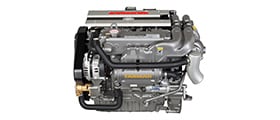 Recreational Marine
Recreational Marine
 Recreational Boat
Recreational Boat
 Premium Cruiser
Premium Cruiser
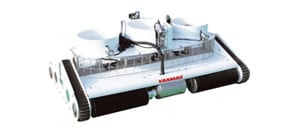 Marine Equipment
Marine Equipment
 Marine Commercial
Marine Commercial
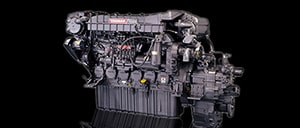 Propulsion Engines (High Speed)
Propulsion Engines (High Speed)
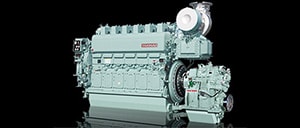 Propulsion Engines (Medium Speed)
Propulsion Engines (Medium Speed)
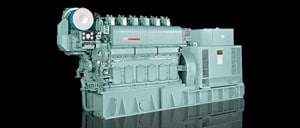 Auxiliary Engines
Auxiliary Engines
 SCR System
SCR System
 Dual Fuel Engine
Dual Fuel Engine
 Two-stage Turbocharging System
Two-stage Turbocharging System
 Electric Propulsion System
Electric Propulsion System
 Energy Systems
Energy Systems
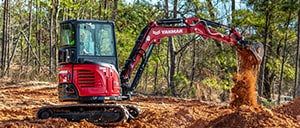 Compact Equipment
Compact Equipment
 Industrial Engine
Industrial Engine
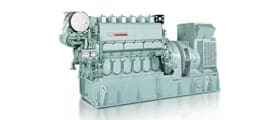 Power Generation
Power Generation
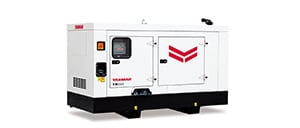 Compact Power Products
Compact Power Products